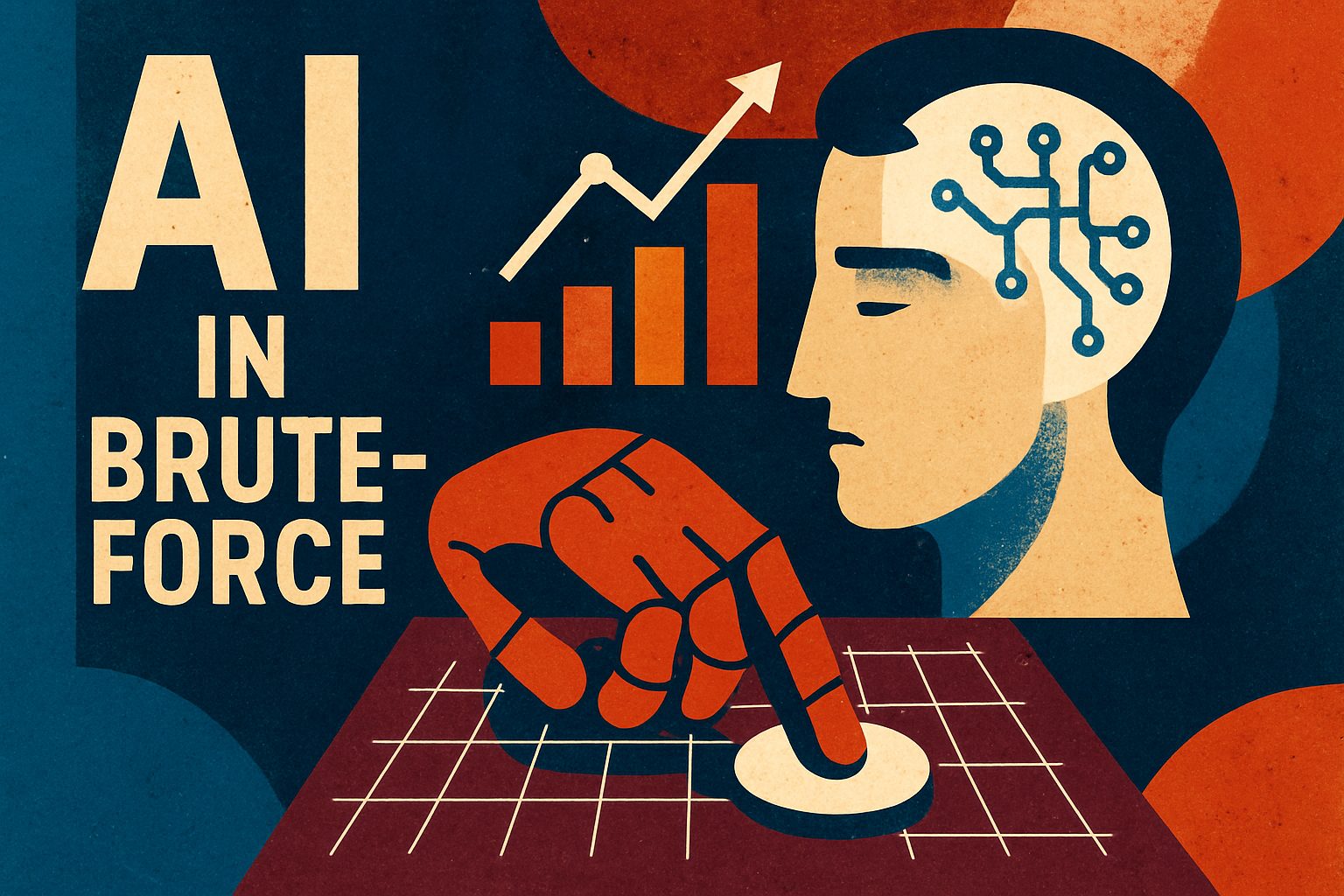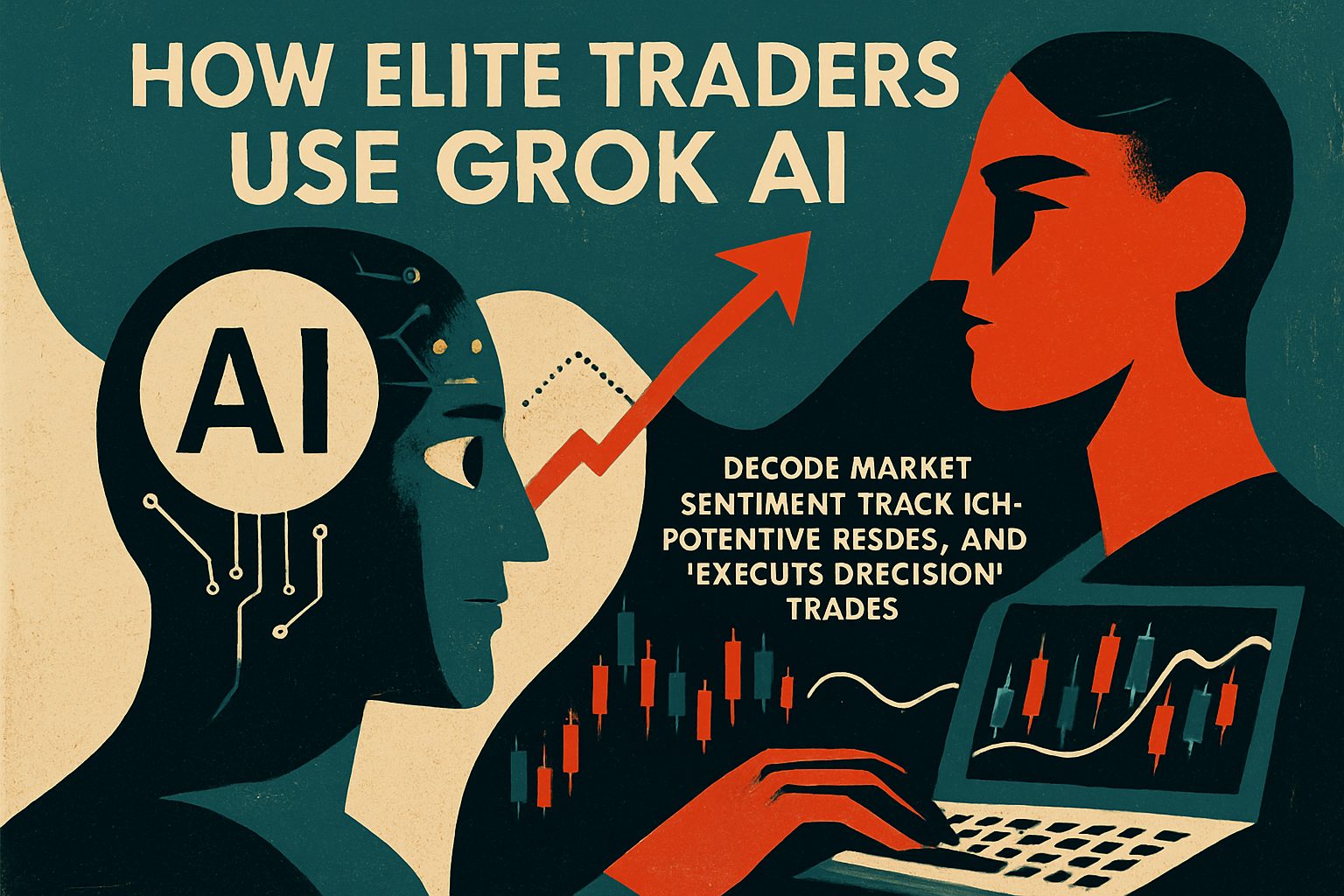
Revolutionizing Trading: The Power of AI in Brute-Force Parameter Optimization
Discover how artificial intelligence is transforming the brute-force optimization of trading strategy parameters in professional trading. This article dives into innovative techniques that enhance efficiency, reduce costs, and maintain thoroughness in strategy evaluation.
This comprehensive analysis explores How is AI utilized in the brute-forcing of parameters for trading strategies in professional trading?, based on extensive research and multiple data sources.
# AI in Brute-Force Parameter Optimization for Professional Trading
Artificial intelligence (AI) is rapidly transforming professional trading by reshaping the brute-force optimization of strategy parameters. In traditional brute-force methods, every conceivable combination of trading parameters—such as moving averages, stop-loss limits, and other configurable inputs—is methodically tested against historical data. However, as elaborated by [AlgoTradingLib's comprehensive overview on brute force optimization](https://algotradinglib.com/en/pedia/b/brute_force_optimization.html), the exhaustive nature of this approach leads to exponentially increasing computation times as the parameter space expands.
## Integrating AI with Brute-Force Techniques
At the core of the new methodology is a hybrid system that leverages AI to intelligently narrow down the vast search space. Machine learning models are trained on historical performance metrics to predict promising regions within the parameter landscape. This predictive pre-screening process helps to efficiently filter out nonviable combinations, thereby reducing computational expense while retaining the thoroughness of traditional brute-force approaches. As a result, traders can achieve both speed and accuracy in optimizing their strategies.
The integration of AI transforms brute-force optimization by:
- **Enhancing Efficiency:** By filtering out suboptimal parameter combinations before full evaluation, AI significantly reduces the number of tests required.
- **Reducing Computational Expense:** Intelligent prediction and focused analysis lower the overall resource consumption compared to exhaustive searches.
- **Maintaining Exhaustiveness:** Despite the narrowing of the search space, the method still relies on evaluating a wide array of potential configurations, ensuring robustness in the optimization process.
## Visualizing the Impact: Financial Crisis Timeline Chart
The integration of AI in financial trading is particularly critical during periods of market stress. The following interactive Plotly timeline illustrates key crisis periods (the dot-com bubble in 2000, the global financial crisis in 2008, and the market disruption during 2020) where brute-force techniques enhanced by AI could make a significant difference in parameter optimization:
<!-- Plotly Chart for Timeline with Crisis Periods -->
<div id="plotly-chart" style="width:100%;height:500px;"></div>
<script src="https://cdn.plot.ly/plotly-latest.min.js"></script>
<script>
var trace = {
x: ['2000', '2008', '2020'],
y: [1, 1, 1],
mode: 'markers+text',
marker: { size: 12, color: 'red' },
text: ['Dot-com Bubble', 'Global Financial Crisis', 'COVID-19 Market Impact'],
textposition: 'top center'
};
var layout = {
title: 'Key Financial Crises Timeline',
xaxis: { title: 'Year' },
yaxis: { visible: false }
};
Plotly.newPlot('plotly-chart', [trace], layout);
</script>
## Process Overview Using Mermaid Diagram
To further illustrate the workflow of AI-enhanced brute-force optimization, consider the following process diagram:
```mermaid
flowchart TD
A[Start: Define Trading Strategy] --> B[Collect Historical Market Data]
B --> C[Determine Parameter Ranges]
C --> D[AI Pre-Screening: Predict Promising Regions]
D --> E[Exhaustive Brute-Force Evaluation on Filtered Set]
E --> F[Analyze Performance Metrics (Profit, Sharpe Ratio, Drawdown)]
F --> G[Select Optimal Parameter Combination]
G --> H[Implement Strategy in Professional Trading]
This diagram succinctly captures the process by which AI and brute-force techniques coalesce: from initial data acquisition and parameter definition to AI-assisted pre-screening and systematic evaluation.

Concluding Insights
In summary, AI plays a pivotal role in optimizing the brute-force parameter search in professional trading by merging the comprehensiveness of exhaustive searching with the efficiency of intelligent forecasting. This hybrid model not only caters to the computational challenges highlighted in traditional brute-force methods—as detailed on AlgoTradingLib—but also enhances the robustness and adaptability of trading strategies during volatile market events. Through visualization tools like Plotly charts and process diagrams, we can clearly observe and communicate the significant advantages of integrating AI into this optimization process.
By providing a clear, systematic approach to parameter optimization, AI-driven methods ensure that traders can navigate complex markets with confidence and precision.
Below is a revised and enhanced version of the research analysis on quantitative trading methodologies. In this version, we explicitly address the role of artificial intelligence (KI) in brute-forcing the parameters of trading strategies in professional trading environments. The discussion integrates insights from the [Beginner’s Guide to Quantitative Trading](https://www.quantstart.com/articles/Beginners-Guide-to-Quantitative-Trading/) and [QuantInsti’s blog on Momentum Trading Strategies](https://blog.quantinsti.com/momentum-trading-strategies/), and it is enriched with meaningful visualizations including Plotly charts, Mermaid diagrams, and comparison tables.
---
## Positioning the Analysis: The Role of AI in Parameter Brute-Forcing
In contemporary professional trading, the application of artificial intelligence (KI) has become a crucial asset—especially when it comes to brute-forcing parameters in quantitative trading strategies. With the increasing availability of high-frequency data and greater computational power, AI methods are being deployed to systematically search for optimal parameter sets that improve strategy performance. Such rigorous parameter optimization not only refines the performance of well-established methods (such as mean-reversion, trend-following/momentum, and statistical arbitrage) but also enables these strategies to adapt dynamically to changing market conditions. As noted by the [Beginner’s Guide to Quantitative Trading](https://www.quantstart.com/articles/Beginners-Guide-to-Quantitative-Trading/), even publicly available research can be significantly enhanced through meticulous evaluation and optimization—a process that is being revolutionized with AI algorithms.
---
## Evidence, Methodologies, and the Integration of AI
Professional quantitative trading systems are built around iterative improvement processes that include strategy identification, historical backtesting, and rigorous parameter optimization. With AI, especially brute-force techniques, optimization has evolved into a systematic search across vast parameter spaces, identifying combinations that might be unnoticeable to the human eye. This approach has been instrumental in transforming initially mediocre strategies into highly robust models, as supported by diverse industry research.
### A Visual Overview of the Quantitative Trading Workflow
The following Mermaid diagram summarizes the workflow of a quantitative trading system with a focus on AI-driven parameter brute-forcing:
Published on:


